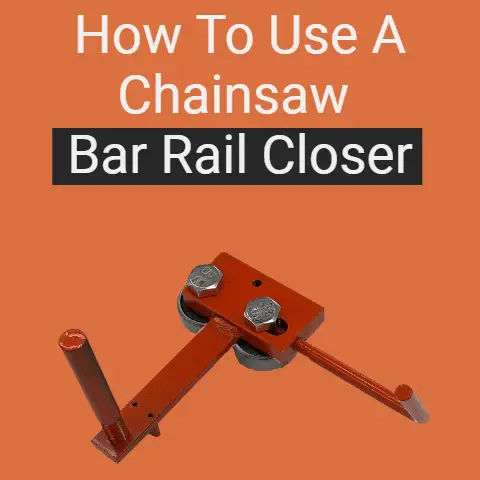How to Read a Chainsaw Bar (5 Numbers to Check)
The Art of Reading a Chainsaw Bar
You know, there’s something deeply
satisfying about working with your
hands.
As someone who spends a lot
of time in the woods, chainsaws have
become an extension of me.
But let me
tell you, understanding your chainsaw
bar is crucial, and it’s not as simple
as it looks.
Have you ever wondered
what all those numbers on the bar mean?
Why Knowing Your Chainsaw Bar Matters
It’s like having a conversation with
your tool.
You wouldn’t want to use
a chainsaw without knowing its quirks,
right?
The Five Key Numbers on a Chainsaw Bar
Let’s dive into these numbers and what
they mean for you and your chainsaw.
1. Bar Length
The bar length is usually the first thing you’ll notice.
This is the part of the saw that extends from the body,
and it dictates how deep you can cut into wood.
- Why It Matters: Longer bars are great for larger trees,
but they can be unwieldy. - Example: A 20-inch bar is versatile for most tasks, while a 12-inch bar is great for limbing.
My Experience with Bar Lengths
I remember my first encounter with a longer bar.
It was during a heavy storm season, and we had a massive oak tree down in the backyard.
My trusty 16-inch bar just wouldn’t cut it—literally!
I borrowed a friend’s 24-inch bar chainsaw, and what a difference it made.
But boy, did it take some getting used to.
The balance felt off at first, and the added weight was something I hadn’t accounted for.
That experience taught me the importance of matching the bar length to the task at hand.
Safety Tip: Ensure the bar length suits your comfort level.
Longer bars require more control and can be dangerous if mishandled.
2. Pitch
Pitch refers to the distance between three consecutive rivets
on the chain divided by two.
It’s usually marked on the bar itself.
- Common Sizes: 1/4″, 3/8″, and .325″.
- Why It Matters: The pitch must match both the chain and sprocket.
Understanding Pitch Through Practice
When I started in this line of work, I thought pitch was just another technical detail.
But one day, I was working on a project that required precise cuts for furniture making.
I learned that a smaller pitch allows for smoother, more controlled cuts—perfect for delicate work.
Conversely, a larger pitch is robust for felling larger trees.
Warning: Mismatched pitches can cause accidents or damage.
3. Gauge
This number tells you the thickness of the drive links, which are
the teeth that slide into the guide bar.
- Typical Values: .050″, .058″, and .063″.
- Why It Matters: Using the wrong gauge can lead to chain slippage.
A Gauge Lesson Learned the Hard Way
I once bought a chain online because it was on sale.
It was a great deal until I tried to fit it onto my chainsaw and experienced slippage right away.
Not only did it halt my work, but it also created a dangerous situation.
After that incident, I vowed always to double-check the gauge before making any purchases.
Tip: Always double-check your chain’s gauge to avoid headaches.
4. Drive Link Count
This number indicates how many drive links are on the chain.
It’s
crucial for replacing chains.
- Why It Matters: Too few or too many links can cause operational issues.
Counting Links: A Tedious but Necessary Task
Replacing a chain isn’t just about grabbing one off the shelf that looks right.
Counting drive links might seem tedious, but it’s necessary to avoid headaches down the line.
I make it a habit to recount them twice because nothing’s worse than getting home and realizing your new chain doesn’t fit.
Example: You might need 72 drive links for a 20-inch bar.
5. Manufacturer’s Part Number
Sometimes you’ll see a part number specific to the manufacturer.
This helps when ordering replacement parts.
- Why It Matters: Ensures compatibility with your chainsaw model.
The Importance of Manufacturer’s Specs
On a camping trip once, my friend had a chain break, and we were miles from any store.
We tried using my spare chain on his saw without checking compatibility first.
It didn’t work out well—his saw ended up binding up terribly.
Lesson learned: know your part numbers!
Tip: Keep this number handy for quick reference when shopping for parts.
Prerequisites and Equipment Required
Prerequisites
- Basic understanding of chainsaw components.
- Familiarity with safety gear like gloves and helmets.
- Ability to identify common chainsaw parts.
Equipment Needed
- Chainsaw
- Replacement chain (if testing your knowledge)
- Safety gear: helmet, gloves, goggles
- Measuring tape
- Chainsaw manual (always useful!)
Steps to Read Your Chainsaw Bar
Here’s how I approach reading a chainsaw bar:
- Locate the Numbers:
Examine the bar closely, often near the base. - Identify Each Number:
Match them to our list above: length, pitch, gauge, and so on. - Double-Check with Documentation:
Have the chainsaw’s manual handy to verify details. - Cross-reference with Chain and Sprocket:
Ensure all parts are compatible before use or purchase. - Conduct a Safety Check:
Always inspect for wear and tear before using your chainsaw.
Breaking Down Each Step Further
Locating Numbers can sometimes be tricky if your bar has seen better days; dirt and grime might obscure them.
A little cleaning can go a long way here.
Identifying Each Number involves some basic knowledge of what each number represents but don’t hesitate to consult your manual or even online resources if you’re unsure.
Double-checking Documentation is something many overlook.
Trust me, I’ve saved myself from purchasing errors many times just by taking this small step.
Cross-referencing with Chain and Sprocket is not just about numbers; it’s about visual checks too.
Ensure that everything lines up smoothly before starting any cutting work.
Troubleshooting Tips
Common Issues:
- Chain Slips Off: Check gauge and tension.
- Vibrations or Jamming: May indicate incorrect pitch or drive link count.
- Excessive Wear: Could be due to mismatched bar length and chain size.
- Chain Breaks Frequently: Inspect for proper lubrication and tension adjustments.
Dealing with Common Problems
When my chain started slipping off unexpectedly during cuts, I realized it was due to improper tensioning after switching gauges unknowingly.
These kinds of problems aren’t just annoying—they’re potential safety hazards!
Best Practice: Always perform regular maintenance checks to extend your tool’s life.
Important Reminders
- Keep your chainsaw clean, especially around the bar and chain area.
- Store in a dry place to prevent rusting.
- Regularly inspect and replace dull or damaged parts.
- Use only recommended oils for lubrication.
- Follow manufacturer guidelines for all replacements and repairs.
FAQ Section
Q: Can I use any chain on my bar?
A: No, it must match the pitch, gauge, and drive link count specified by the manufacturer.
Q: How often should I replace my chainsaw bar?
A: It depends on usage but regularly inspect for visible wear or damage.
Q: What if I can’t find the numbers on my bar?
A: Check your manual or contact the manufacturer for guidance.
Q: Why does my chainsaw keep jamming?
A: This could be due to incorrect pitch or gauge, improper tensioning, or lack of lubrication.
Understanding these numbers isn’t just about maintenance; it’s about getting the best performance out of your chainsaw safely.
Got any other questions?
Let’s chat!






